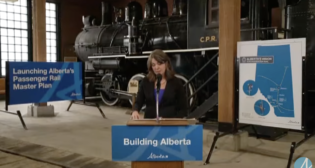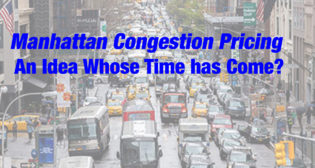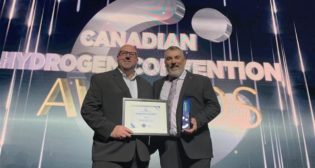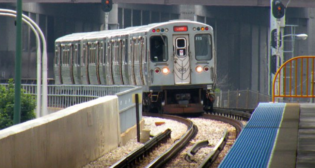
Transit Briefs: SEPTA, Project Connect, Valley Metro, NYMTA, Amtrak
Written by Marybeth Luczak, Executive Editor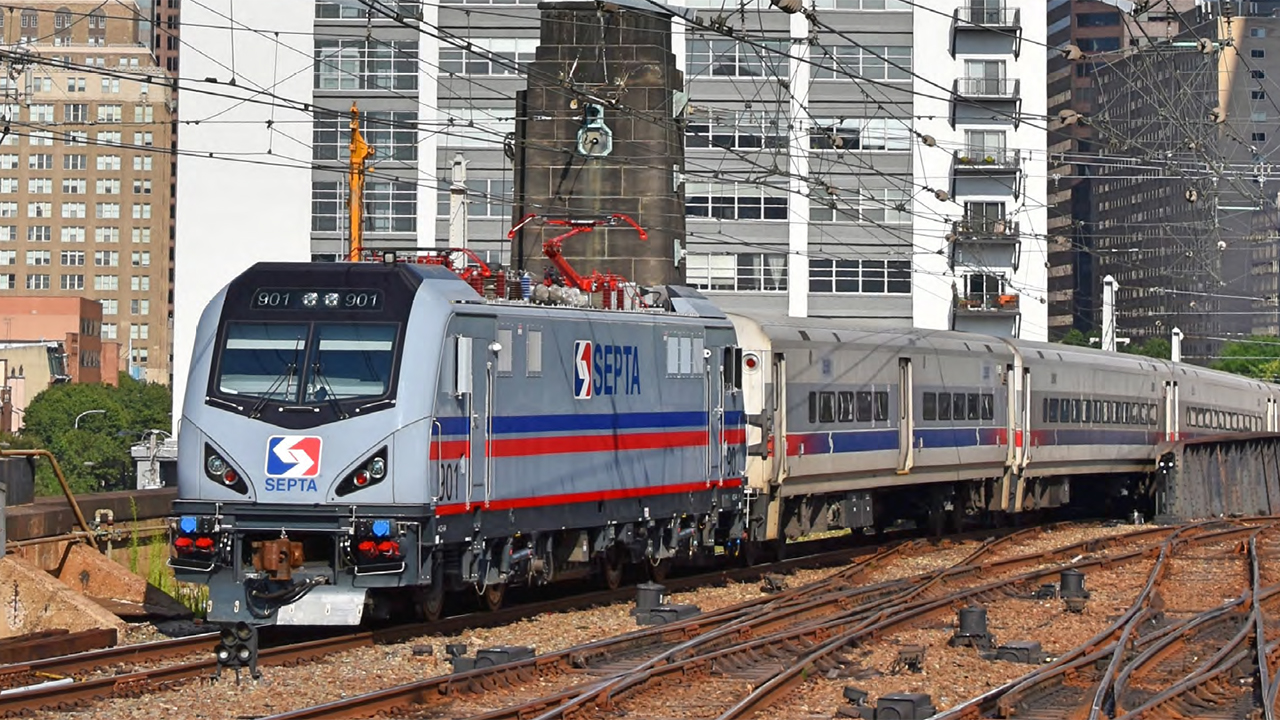
Pennsylvania Gov. Josh Shapiro’s upcoming budget plans include a proposed $282.8 million in new funding for transit agencies, including “cash strapped” SEPTA, The Philadelphia Inquirer reported Jan. 26. (SEPTA Photograph)
Pennsylvania Gov. Josh Shapiro is planning to include $282.8 million in new state funding for Southeastern Pennsylvania Transportation Authority (SEPTA) and other transit agencies. Also, the Federal Transit Administration (FTA) advances Project Connect light rail in Austin, Tex.; Phoenix Valley Metro launches the Northwest Extension Phase II project; New York Metropolitan Transportation Authority (MTA) announces the first round of subway station renovations for 2024; and Amtrak kicks off Art at Amtrak’s third year with the latest installation at New York Penn Station.
SEPTA
Pennsylvania Gov. Josh Shapiro’s upcoming budget plans include a proposed $282.8 million in new funding for transit agencies, including “cash strapped” SEPTA, according to administration officials, The Philadelphia Inquirer reported Jan. 26.
“Shapiro’s new measure would generate an estimated $1.5 billion over five years by increasing the allocation of sales tax revenue dedicated to supporting commonwealth transit systems, the administration said,” according to the newspaper. “SEPTA would get the largest cut.”
Gov. Shapiro said in a statement to the Inquirer that “[i]nvesting in and improving our public transit systems is a commonsense way to create good-paying jobs, spur economic development, and help Pennsylvanians reach their destinations safely.”
Officials from his administration told the paper that “Shapiro is asking SEPTA to guarantee a real plan to tackle crime and disorder and cleanliness on its system so people can feel safe and comfortable riding,” as he has “focused on SEPTA’s public safety issues for months; he brokered a deal to end a strike by the union representing transit police officers in December.” Shapiro has also encouraged four suburban counties and Philadelphia to boost their contributions to SEPTA, the Inquirer reported.
SEPTA CEO and General Manager Leslie S. Richards thanked the governor, noting that he “has been proactively engaged with SEPTA and our partners for months to construct this strong funding proposal to address our most pressing needs and enable [us] to continue serving our communities,” according to the paper. She added that SEPTA is “committed to addressing our community’s serious concerns about cleanliness and safety.”
SEPTA is preparing for a potential 30% increase in fares and 20% cut to bus, subway, trolley and Regional Rail service, “in case fiscal help from Harrisburg doesn’t arrive in time,” the newspaper said. “Service cuts would take place in September because of the time it takes to wind down operations and union contracts governing employee schedules, SEPTA officials said. A fare increase could come earlier. The agency plans to use money from its service stabilization fund, mandated as a reserve by PennDot, to help while waiting for funding help, officials said.”
Transit riders and advocates are protesting the measures, the paper said, and Philadelphia Mayor Cherelle L. Parker and City Council President Kenyatta Johnson wrote in a letter to Shapiro that “[w]ithout additional investments, SEPTA would be forced to cut service levels and increase fares—setting off a chain of negative consequences for local residents and businesses, the regional economy and, over time, commonwealth tax revenues.”
In June 2023, SEPTA reported that FY 2024 was the last budget year before it would hit a “fiscal cliff,” resulting in service cuts and fare increases without additional state funding for everyday operating expenses. According to the transit agency, the $1.69 billion FY24 operating budget used the final installment of federal COVID relief funding; by April 2024, the federal COVID relief funding was expected to be exhausted and SEPTA would face recurring structural deficits exceeding $240 million starting in FY 2025.
In other SEPTA news, ticket windows at 14 Regional Rail stations will be shuttered Feb. 3.
Project Connect
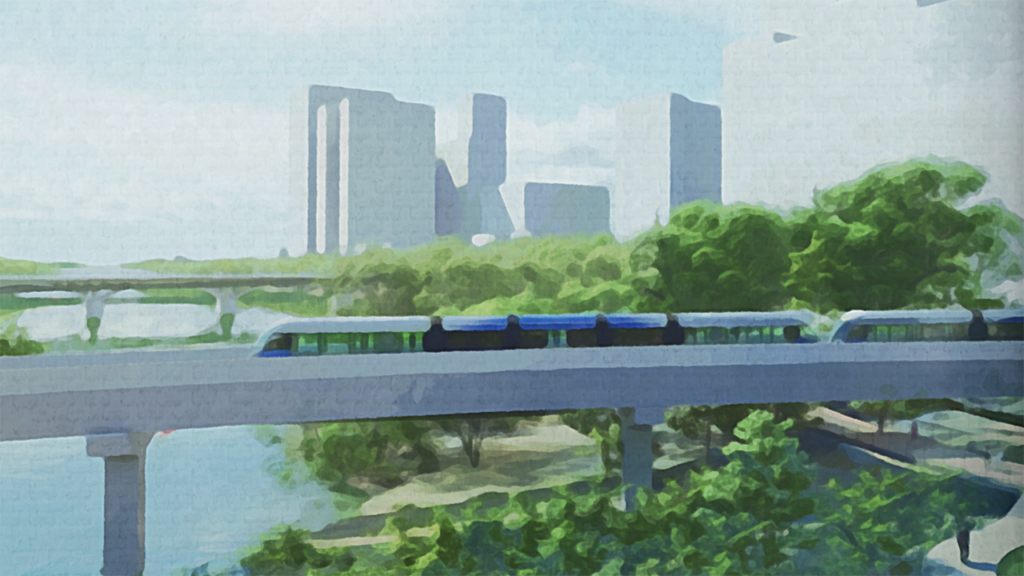
The FTA on Jan. 19 published a Notice of Intent to work with Austin Transit Partnership (ATP) on advancing Austin Light Rail, according to ATP, the local government corporation responsible for implementing Project Connect, including the planning, financing, execution, and oversight of Austin Light Rail.
Austin voters in 2020 approved a referendum (Prop A) to provide a dedicated revenue stream to fund investments in Project Connect. ATP last May recommended a 9.8-mile, 15-station light rail alignment as the project’s first phase.
The Austin Light Rail Implementation Plan was adopted in June 2023. ATP said it is now proceeding with required studies to support the federal process and secure federal funds. The Notice of Intent filed by the FTA kicks off the formal 45-day public scoping process that ATP said will examine the proposed project’s station locations and design options.
“This next phase is critical in implementing this transformational project for Austin,” said Jennifer Pyne, Executive Vice President of Planning, Community and Federal Programs at ATP. “Since its inception, Austin Light Rail has been informed by community input and now, Austinites will have the opportunity to provide their thoughts and insights into the design topics that they feel are most important.”
Information to be shared with the public during this period includes:
- A description of the purpose and need for Austin Light Rail.
- Education on the environmental analysis process.
- Maps and diagrams describing the proposed project (and design options within) that are being evaluated in accordance with the National Environmental Policy Act.
ATP will host in-person and virtual open house events next month, which it said will help “further inform the analysis that will be used to prepare the draft Environmental Impact Statement [EIS].” The draft EIS is slated for release in fall 2024.
Valley Metro
More than 2,000 people, including federal, state and local leaders, gathered Jan. 27 to celebrate the opening of Valley Metro’s Northwest Extension Phase II light rail project, connecting Mesa, Tempe and downtown Phoenix, Ariz. It is expected to initially attract 1,400 new daily riders to the light rail system. The launch date was announced in December.
The 1.6-mile extension (see map below) expands light rail service farther into northwest Phoenix, running west from 19th and Dunlap avenues, going north on 25th Avenue, then west on Mountain View Road, crossing the I-17 freeway to the redeveloping Metrocenter area. The project includes three new light rail stations, a four-story parking garage, and 200 new trees along with enhanced landscaping.
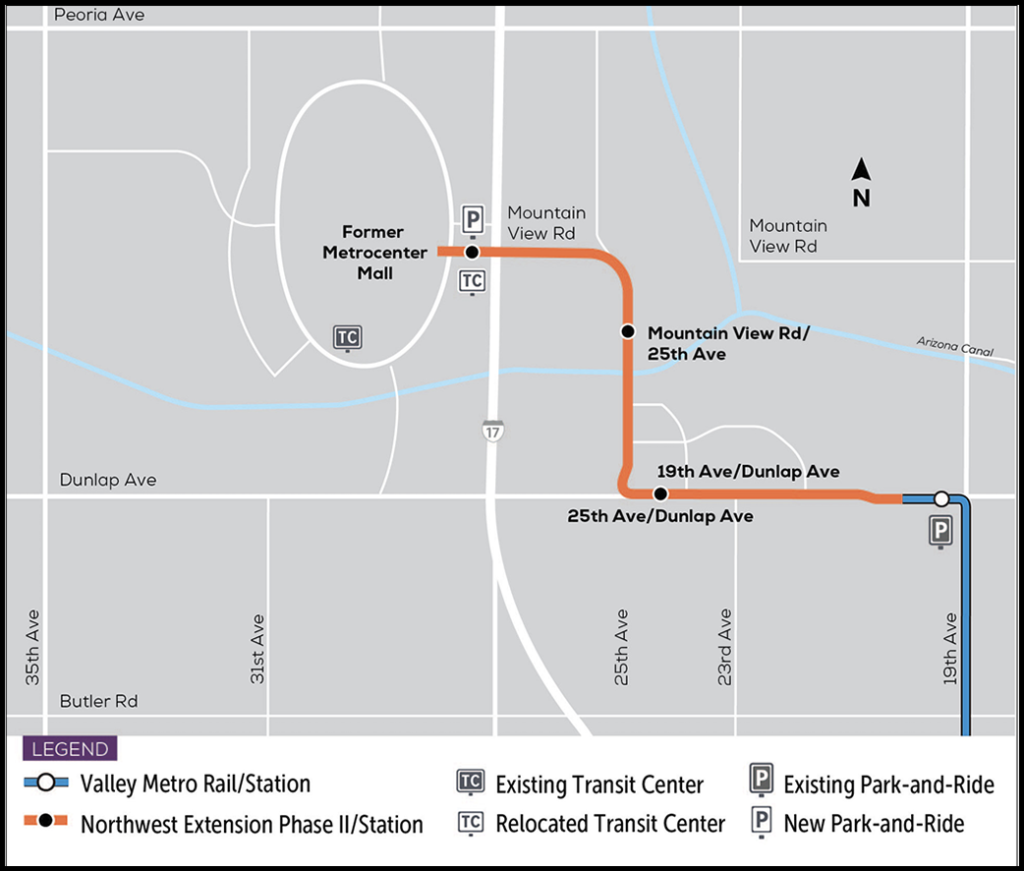
It also includes a series of “firsts,” according to Valley Metro: the first elevated station, rail-only bridge over I-17, and a multi-modal transit center named after regional transit champion, former Phoenix Mayor and Councilmember Thelda Williams.
The project received $158 million from FTA’s Capital Investment Grant program for the project, whose construction began in 2020. The city of Phoenix T2050 funds provided $213 million and regional transportation funds from Proposition 400 provided the final $30 million.
Northwest Extension Phase I opened in 2016.
“Congratulations to the Valley Metro team, our contractors and our neighbors, working in lockstep with the city of Phoenix, to deliver a project ahead of schedule and on budget that beautifies and enriches our community, as depicted by Alberto Rios’ Light Rail Hummingbird,” Valley Metro CEO Jessica Mefford-Miller said. “We have made the leap over one of our busiest and most vital freeways with a bridge that opens the door to the West Valley.”
“I am proud to be back in Phoenix, less than three years after signing the grant that funded this important extension that will make such a difference in the lives of people in this region,” FTA Administrator Nuria Fernandez said. “This was the first project funded by FTA under President Biden’s Bipartisan Infrastructure Law and the city and Valley Metro have done incredible work building it on budget and delivering the project earlier than expected. Congratulations to all.”
NYMTA
MTA New York City Transit (NYCT) will complete upgrades, repairs, and deep cleanings at 13 subway stations in first-quarter 2024, MTA reported Jan. 26. The work is part of NYCT’s “Re-NEW-vation Program,” which utilizes planned service outages to scrap, prime and repaint stations; install new LED lights; refinish benches located on platforms and mezzanines; replace outdated signs; and repair cracks. Each station also undergoes repairs specific to its needs including rebuilding and rehabilitating stairways, installing new draining systems to prevent flooding conditions during heavy weather events, and tiling and track ceiling work.
The first round of stations to be renovated this year are:
- 66 St – Lincoln Center, 1 line
- Fort Hamilton Pkwy, F, G lines
- 161 St – Yankee Stadium, D line
- Bushwick Av – Aberdeen St, L line
- Jamaica – Van Wyck, E line
- Rockaway Av, C line
- 57 St, F line
- 2 Av, F line
- Sutphin Blvd – Archer Av – JFK Airport, E line
- 170 St, 4 line
- Shepherd Av, C line
- Marble Hill – 225 St, 1 line
- Sutter Av – Rutland Rd, 3 line
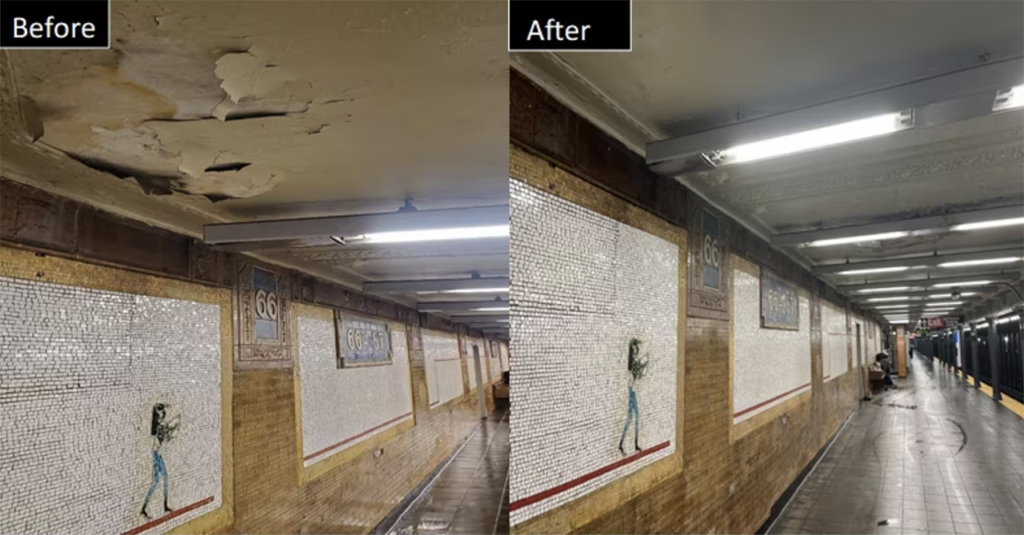
According to MTA, at 66 St – Lincoln Center 1 Station (pictured above) transit workers have scrubbed walls, sanded and stained benches on platforms, repainted ceilings throughout the station, inspected and repaired wall tiling where needed, and installed and cleared drains to prevent water build-up during weather events.
Since the Re-NEW-vation Program began in 2022, 63 stations have been upgraded. Work included 1.6 million square feet of repainted surfaces; 17,030 new light fixtures installed; 91,960 square feet of wall tile replaced; 4,142 square feet of floor tiles replaced; 918 metal signs replaced; 41 new decals installed; and 45 outdated, damaged, or unnecessary signs and maps removed.
“The Re-NEW-vation Program is key to delivering on our North Star of faster, cleaner, safer service for customers across the transit system,” NYCT President Richard Davey said. “We’re not resting on our accomplishments from 2023; customers across the Bronx, Brooklyn, Manhattan, and Queens can look forward to better station environments as we work to improve 50 more stations in 2024.”
“Improving customer satisfaction is a top priority and the Re-NEW-vation Program has been proven as a great way to bring tangible enhancements to customers where they are,” MTA Chief Customer Officer Shanifah Rieara said. “With this new list of Re-NEW-vations, customers can look forward to cleaner and brighter stations in their neighborhoods.”
“Customers deserve not just dependable service, but great station environments too,” NYCT Senior Vice President of Subways Demetrius Crichlow said. “I’m proud of all the hardworking NYCT employees who brought upgrades to 63 stations since the start of our Re-NEW-vations initiative and look forward to bringing it to even more stations this year.”
Amtrak
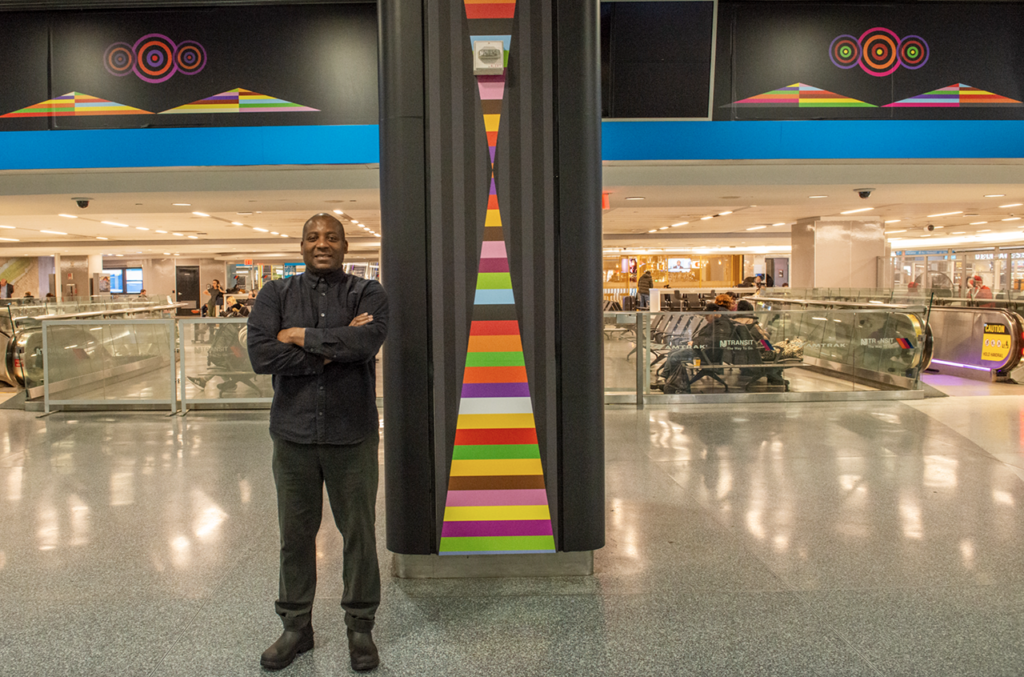
Amtrak on Jan. 25 opened the latest installation for its three-year-old Art at Amtrak program. New York-based artist Rico Gatson’s work, “Untitled (Collective Light Transfer),” covers the entire New York Penn Station concourse and will remain on view through this summer (see photograph above).
The art features “geometric compositions alongside a carefully selected color palette, which illuminate the station with pulsating energy and evoke a sense of resonating rhythm and vibration,” Amtrak reported. “Radiating lines and concentric circles echo the collective movement of bodies circulating throughout the station.”
According to “America’s Railroad,” Gatson’s artistic process “layers ideas and inspirations he has ruminated on throughout his career, such as spirituality, African, Native and Indigenous artistic practice, music as a transcendental force, illumination as a concept, abstract mathematics and the role of art in counterculture movements and political identity.” The designs are said to “come together to uplift, reflect, and guide travelers as they move between the rotunda, the concourse, their train and their next destination.”
